Beth Kephart's Blog, page 124
July 7, 2013
my pottery collection, as photographed by my husband
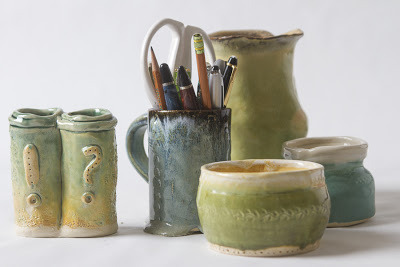
My husband has been testing his camera lens for an upcoming client project and asked if he might use my first poor pottery pieces as subjects. I (immersed in the making of the Jilly Joy and Chippy video) said yes, out of the corner of my mouth, and mind.
I should have known that he'd come back with something quietly considered. That's how he does things. I just wish I could show you his pottery work, which is indeed so spectacular that it stopped my father in his tracks the other night, just as he was about to leave following dinner.
"You made those?" my father said to my husband, whose artistic talents have been widely in view through the years.
I had to say, "Yes! Yes!," because my husband, like my son, is very modest. Which is why he will not allow me to showcase his great work here. I can only share with you the caliber of his photographs.
I am unafraid to fail at pottery. That makes me very happy.




Published on July 07, 2013 14:21
Handling the Truth: Jilly Joy and Chippy Present the Book Trailer
So here we are. Book trailer time. I didn't know what to do until I heard Jilly Joy and Chippy having this conversation in the forest. I'm hoping they are still so absorbed in their private conversation that they'll never know of this uber-secret video recording.
More on Handling the Truth (the book, the early reviews, writing exercises, student work, books I love) can be found here . Handling will be released as an original paperback by Gotham on August 6th.
And it really does glow in the dark.




Published on July 07, 2013 12:04
My friend Jane sings in Tallinn with the Smith College Alumnae Choir and Estonian Performers
I do have a wonderful neighborhood, and truly wonderful neighbors. One of my very favorites is a lady named Jane—an educator, an amazing mother and grandmother, a woman engaged with the world.
This morning she sent me this clip in an email that contained the word "joy." You'll feel precisely that as you watch the Smith College Alumnae Choir perform an excerpt of Beethoven's Choral Fantasy in Tallinn with the Estonian Male Choir and the Estonian National Youth Orchestra. The woman in the front row who, at the end, closes her black book and presses it to her cheek—with joy— (the woman whose laugh of pleasure you can almost hear): that is my friend Jane.
It is the gesture that defines her. And it is thrilling music to hear at the end of this independence week.




Published on July 07, 2013 03:49
July 6, 2013
Margot/Jillian Cantor: Reflections
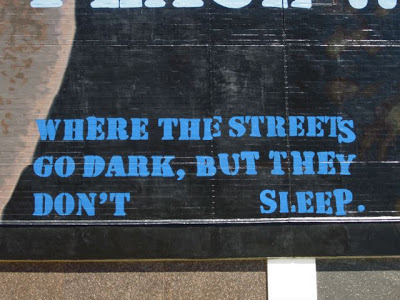
I took this photograph a few months ago in a part of Philadelphia I'm sure my friend Jillian Cantor knows well. The words stopped me. I had a hunch they'd come in handy some time. I had no idea just how handy, however, until I read Jillian's wonderfully conceived and executed new novel, Margot (Riverhead, September 2013).
For there, at the heart of this novel, in the heart of Philadelphia, in the middle of last century, is a young thirty-three year old woman whose identity has been masked by many small lies and a sweater whose one tight sleeve never reveals the ink on her arm. She is a law firm employee, a paralegal student, a responsible young woman whom no one knows. She lives in a small apartment with her silent cat. She remembers love and may be falling in love. She is Margot Frank, Anne's older sister, and she, history be damned, is not dead.
Her sister's diary has just been released as a major film. Gossip—and gossipers—are closing in. She is inclined to run when others might walk, to see dangers where the easy-going Americans don't, to pretend that she is Polish when she is not. And as her past and present worlds collide, she must decide what to hold onto and what to reclaim and how much of herself she should blame for her sister's death.
Reviving Margot Frank as the American Margie Franklin is such a smart reversion of history that I had to stop myself, as I read, from going all fan-girl Facebook on Jillian. (Well, I did surcease at the 50-page mark to tell her how cool I thought this whole thing was.) And Jillian, who once lived near Philadelphia, accurately portrays the city at mid-last-century—the streets, the delis, the Reading Terminal Market, John Wanamaker's, the Main Liners. Just as accurate, I suspect, is Jillian's portrayal of the Franks' years in hiding, the Green Police, the horrors of the concentration camps. Too many writers of historical fiction seem to think they have done their job if they bundle a few era-specific brand names, dress styles, and street signs together, then tell the story that would have fit the present day. Jillian's research goes far deeper and comes, I absolutely believe, from a real desire not just to write a story, but to empathize, to know. Still, none of that research obfuscates the tale. None of it gets in the way of the language itself. This is a book that can be read in one sitting, and that will be remembered long after that.
There's suspense here, history, sister love, guilt, and streets that go dark but do not sleep. I have big expectations for this novel when it is released, and a whole lot of respect for Jillian.




Published on July 06, 2013 14:51
The News from Spain: 7 Variations on a Love Story/Joan Wickersham: Reflections

I'd wanted to read this intermingling collection of short stories for a long time. It has sat here, a tease—bought when I bought Elizabeth Graver ( The End of the Point ) and Jessica Keener ( Night Swim ). Set aside for a special time.
I was already familiar with the power and inventiveness of Joan Wickersham's voice. Her The Suicide Index would have been included as a stellar example of the memoir form in Handling the Truth had I read it in time (as it is, I list the book on my additional recommended reading list here, on the blog). I had, in addition, read the reviews of the story collection. And yet I was utterly unprepared for the impact The News from Spain would have on me. I was staggered after reading these seven stories through, each story (brilliantly) called "The News from Spain." I sat there on the couch, unable to will myself to stand. Arrows through my soul. Ache for the world and the women of the world, who love and want and hurt and try and wound and are left wounded.
The News from Spain is a sandblasting of the heart.
Readers comment on Wickersham's precision. That is the word, in a nutshell. Nothing escapes Wickersham's eye. No small detail. No minor hurt that becomes a remembered hurt that becomes the defining truth in a marriage, or in a mother-daughter relationship, or in an unrequited affair. Love is so beautiful, some of the time, and love is so brutal, much of the time. It is the war that wants only peace but keeps finding reasons to war. It is the thing that saves us. Wickersham understands it all. Her readers fall to their knees.
How twisted and smart Wickersham is, christening each short story with the same name. Makes it kind of impossible to pull them apart, to speak of them individually, and that is part of Wickersham's point. So I will just say that there's a story in this book about a dancer who has fallen ill, paralyzed. She is cared for by a young man in love with another young man, and their relationship deepens while her husband, still key in the dance company, is away, having an affair with a young dancer. The dancer tries to live on, tries to be smart, tries to be witty, even, and the caretaker tries to be whom he thinks she wants him to be—available and invisible by turns. This story devastated me. It has one of the most unforeseen and sensational endings of any story I have read.
And it is matched by the other stories in this work of art.




Published on July 06, 2013 02:57
July 5, 2013
Handling the Truth: On the Writing of Memoir arrives
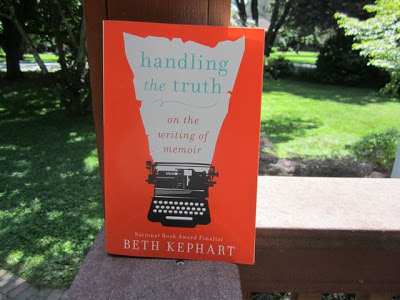
Am I afraid to open it? Yes. (I feel this way about every book.)
Will I open it someday? Perhaps. (I think that is required, and probably sooner or later, as I have two book interviews scheduled for next week. I need to know myself, to the degree that is still possible. To the degree that I can bear myself.)
Do I love the cover? Absolutely. (It's a dream cover, and you can't lose it at night.)
Many thanks to the Gotham team for making Handling the Truth: On the Writing of Memoir the reality it has become. I very much wanted this to be a paperback book, so that it would not represent a burden on writers' and students' budgets. Gotham saw this—and many other things—in precisely the same way, and for that I'm ever grateful.




Published on July 05, 2013 12:38
The Bell Jar/Sylvia Plath: Reflections
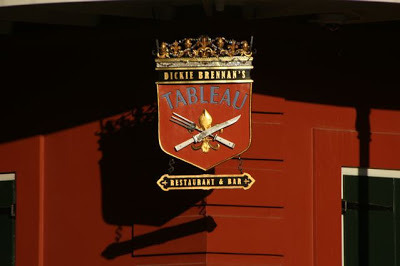
It wasn't until relatively late in my literary life that I began to read all the books that I was supposed to read—to assemble the library expected of a writer. I'd read biographies and histories for much of my younger life—the books expected of a person with a degree in the History and Sociology of Science. I never took a proper literature course, save for the one I nearly bungled on Wordsworth and the Romantics my freshman year at Penn. My first conversation with a real writer happened when I was already a mother and drove myself to a downtown store to meet Fae-Myenne Ng. My son was five before I sat in my first writing workshop with Rosellen Brown and Reginald Gibbons—before I heard, for the first time, the language of critique and process.
There are gaps, in other words, huge gaps in my literary education, and there always will be. I had not, for example, ever read Sylvia Plath's autobiographical novel, The Bell Jar, until this week. Which is zany, I know, because a dear friend, Kate Moses, wrote Wintering, a Sylvia Plath novel, and because I have freaked out myself (and sometimes my students) listening to Plath read her own poems on audio tapes. But The Bell Jar? I had not read it.
It's been sitting here for the past six months, along with dozens of other books I bought in an effort to improve my education. I chose to read it on a day of deep but temporary illness, which was not, many of my Facebook friends warned, one of my best ideas. Still, I was intrigued, from the start, by the chatty quality of the book's opening pages—this Esther (so much like Sylvia) reporting on her summer in New York as a winner of a fashion magazine contest. Days were spent "working" at the magazine, which is to say receiving gifts and going on adventures and writing from time to time for the editor. Nights were spent in a girls' hotel, the Amazon. Or that's where the nights were supposed to be spent. But these were girls in New York City, and there were hungers.
New York, through the eyes of the heroine, presented on the first page:
New York was bad enough. By nine in the morning the fake, country-wet freshness that somehow seeped in overnight evaporated like the tail end of a sweet dream. Mirage-gray at the bottom of their granite canyons, the hot streets wavered in the sun, the car tops sizzled and glittered, and the dry, cindery dust blew into my eyes and down my throat.
That cindery dust is a forewarning, as is the early obsession with the electrocution of the Rosenbergs, and soon what appears to be a straightforward account of a growing-up summer fractures and splinters, and time comes undone. Esther is searching, first, for a reason to live. Then she is searching for a way to die. The words climb over themselves. The scenes see-saw. It is all both naive and awful, artless and poetical, and no one is spared, least of all Esther/Sylvia herself.
Plath, we know, did not want this book published in the United States (it was first released in England) for fear of how it would affect those she thinly disguised, or turned into caricatures. (She was also concerned about the book's impact on her literary reputation.) Indeed, despite the change in names and facts, it is difficult for any reader not to draw conclusions about the real mother, the real editor, the real benefactor, the real institutions of Sylvia's life, and Sylvia herself. Just as it is sometimes difficult to remember that the voice in this novel also belongs to the searing Ariel poems.
All of which reaffirmed for me these simple facts:
1. Anyone writing truthfully, even if from behind a mask, will forevermore negotiate the consequences of the act.
2. Writers possess many voices, writers are many moods, writers write well and not well, and are still writers.
3. A single book can contain the best of the writer's talent and the plaintive worst. We need to look at the whole, when we evaluate. We need to respect the difficult thing that writing finally is. I lately see too many self-styled critics out there declaiming against a hugely talented author's work as if they might, themselves, have written the book better. Just try, I think, to write the book better.




Published on July 05, 2013 07:02
July 4, 2013
Memoir Etudes, Handling the Truth, and a brief reflection on the structural choices Mark Doty makes in Heaven's Coast

Tomorrow I'll hold finished copies of Handling the Truth in my hands for the first time. There are nerves tied up with that experience, as well as quiet joy. But always, for me, the nerves exceed the joy.
I quote, reference, and celebrate some 100 memoirs in Handling, as well as the work of my students. I could have added in another 100 books, could have waited to publish the book to include the extraordinary work of my most recent students, and it would have never been enough. On my Handling page, I cite memoirs that have made me think since the book was put to bed. And here, today, I'm reflecting on an early memoir that is in the book—Mark Doty's Heaven's Coast, published in 1996, shortly before I first heard Doty read at the Bread Loaf writer's conference.
I didn't have room, in Handling the Truth, to reflect on Doty's structural approach to his true story about the death, from AIDS, of his partner, Wally. Yesterday, as I re-read the book, I thought of etudes. Of how Doty divides his memoir into four very different parts.
(I also thought about how much we learn when we read old favorite books again.)
There's a prologue, to begin with, a gorgeous brief address to the reader that establishes the themes of the book and concludes with this line: "Our apocalypse is daily, but so is our persistence."
Next is "Coastal Studies," which is the most memoiristic of the four sections. This is Doty allowing his mind to assemble the meaning of Wally's death by way of associations—by studying the seals on the beach where they lived, the finches that built nests into the wreathes of a house they shared, the lessons left behind by a self-destructive poet friend. Doty writes thematically here, universally, with notes on grief and desire and coda and clarity that will resonate with anyone who has ever lost. Here is Doty, for example, speaking honestly with Bill, now dying of AIDS, of what Doty learned from Wally's death:
I tell Bill everything. About the ease of it, the awe and mystery, and Bill listens carefully, closing his eyes sometimes as if to listen more closely, sometimes opening them wide as if to take more of the story into himself. I try not to leave anything out; I can tell what he wants from me is completeness, any sense I can give of actuality, any guesses this eyewitness to last things may have made. I have feelings, experience, intuition more than I have knowledge in any conventional sense—but isn't that part of what being with dying teaches us, different sorts of knowing?
The third etude, "Through," is far more autobiographical in nature. It is Doty laying out the facts of Wally's death, mostly chronologically, sometimes repeating the details we'd encountered already in the first etude. "Coastal Studies" is the work of a poet adept at metaphor. "Through," on the other hand, is the work of a lover who must confront the facts of the loved one's death so that he can finally heal his heart, head, and body. It starts like this, below, and mostly carries this matter-of-fact tone throughout:
Wally died of a viral brain infection, FML, which stands for progressive multifocal leukoencephalopathy, a condition which an ordinarily harmless virus that most of us carry around in our lives is able to migrate, due to the suppression of the immune system, into the brain.
Finally, there is "Epilogue: Consolations," a quilting of afterthoughts and messages from the dead, from friends, from poets. It is, one senses, Doty moving away from the long form of his narrative and back to the making of the poetry which Wally's long dying had, to some extent, stoppered.
Four etudes. Had the book been made of "Through" alone, I would not think of it as memoir. As it is, Doty does not just each us about love, grief, and surviving in Heaven's Coast. He teaches us something about structure and form.




Published on July 04, 2013 08:05
July 3, 2013
my son's first performance review
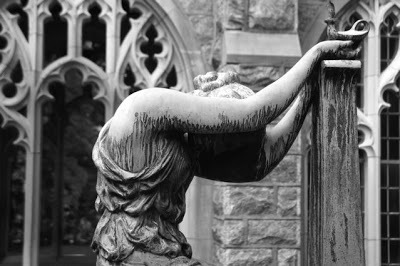
Yesterday evening I sat beneath the I-95 overpass talking to my son on the phone. He'd had his first performance review, three months into his first job, and because it is impossible for him to boast, gloat, brag, or exaggerate (not because he can't, of course, but because he won't), it took a while for me to get the news.
At the core of his great happiness was this simple fact: He is bringing everything he has to this job he found on his own and has shaped for himself. He is at the top of his game, working hard, doing what he loves. The sheer rightness of it makes him laugh.
There is so much my son continues to teach me about what goodness is all about. But last evening, listening to him as the cars roared overhead, I was reminded that the biggest rewards in life come from knowing that you've done your very best.
It's never about the blue ribbons. It's about living with yourself.




Published on July 03, 2013 05:09
July 2, 2013
Philadelphia's Literary Legacy Unveiling, at the Philadelphia International Airport (A wing)
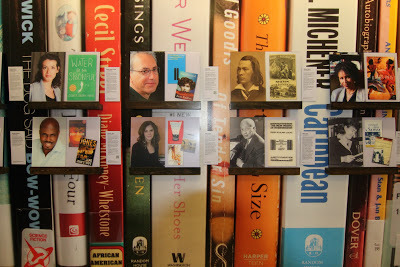
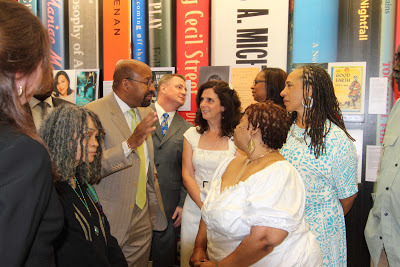
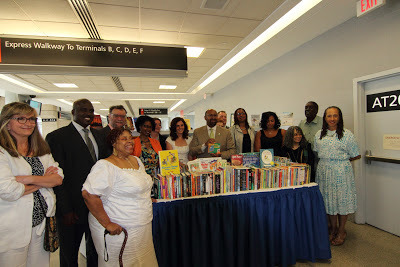
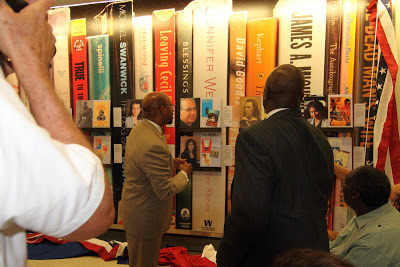
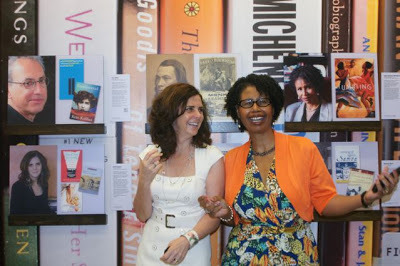
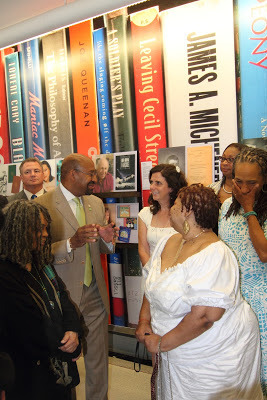
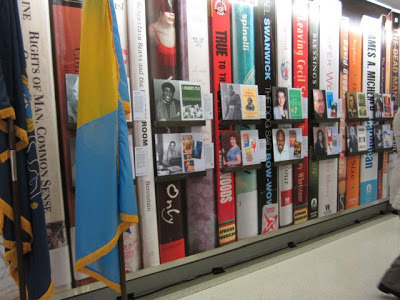
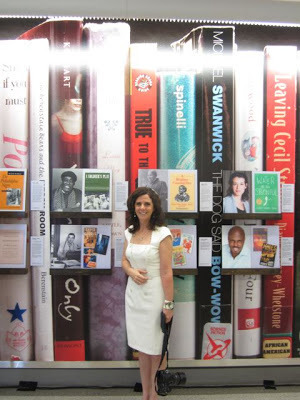
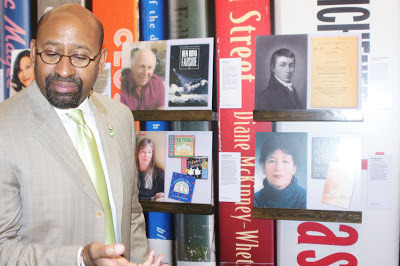
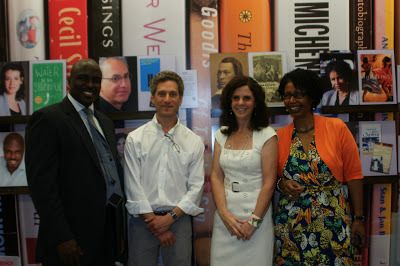
We dodged the rain and made our way to the Philadelphia International Airport for the Literary Legacy unveiling. So many thoughts, but, really, the pictures tell the tale. Great thanks to Leah Douglas (exhibit curator), Siobhan Reardon and Andy Kahan of the Philadelphia Free Library, Mark Gale, CEO of Philadelphia International Airport, and Dr. Adrienne Jacoby of Philadelphia Reads for making this such a memorable day.
Most important fact: Some 3,000 books were donated through this event on behalf of Philadelphia school children.
The exhibit, which Leah designed, is beautiful and will hang for a year in the A terminal of the airport. We have a mayor who loves books and kids—and supports both. And I am honored to be among those who love stories as I do, as well as my very first teacher, Rosellen Brown.
Among those photographed here: Mayor Michael Nutter, Siobhan Reardon, Andy Kahan, Karen E. Quinones Miller, Lorene Carey, Sonia Sanchez, Diane McKinney-Whetstone, Solomon Jones, Teri Woods, Judy Schachner, Charles Fuller, and Michael Swanwick. Rosellen Brown is featured behind the Mayor. I was amazed to find The Heart is Not a Size, Nothing But Ghosts, and You Are My Only as featured book spines, and am proud that Flow: The Life and Times of Philadelphia's Schuylkill River, Handling the Truth, and Small Damages are featured in the author panel.




Published on July 02, 2013 11:52



